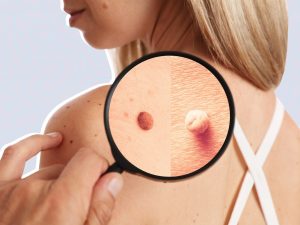Skin Tag Removal

What are skin tags?
Skin tags (acrochordons) are small, noncancerous growths that tend to be the same colour as your skin. They often look like a cluster of skin tissue extending out from a tiny stem. They’re sometimes darker and may resemble a raised mole. Most skin tags are between 1-5 mm, but some can grow as large as a few centimetres.
Are skin tags common?
Yes, acrochordons are common. Researchers estimate that half of all adults will have at least one skin tag in their lifetime.
How do skin tags affect my body?
Skin tags do not affect your health. But they can be unsightly. If they are in areas like your face and neck, they can make you self-conscious. A skin tag removal procedure can help.
What causes skin tags?
Acrochordons occur when the body produces extra cells in the skin’s top layers. They tend to form in skin folds and areas where natural movement causes the skin to rub against itself. Skin tags often grow in these areas:
- Armpits.
- Eyelids.
- Groin or thighs.
- Neck.
- Under the breasts.
- Genitals.
What are my chances of developing skin tags?
The likelihood of developing skin tags increases with age. You may also be at risk if you:
- Have a family history of skin tags.
- Live with health issues such as diabetes, obesity or skin disorders, like Birt-Hogg-Dubé syndrome.
- Experience high levels of growth factors, which can happen during pregnancy.
What are the symptoms of Acrochordons?
Skin tags typically do not cause symptoms. In some cases, friction from a skin tag rubbing against your skin, clothes or jewelry can cause discomfort or bleeding.
How will you remove the skin tag?
Here at Persona Medical Aesthetics, Skin & Laser Clinic there are many methods for skin tag removal.
- A sharp instrument such as a scalpel to shave or cut it off.
- Extremely cold gas (liquid nitrogen) to freeze it.
- Heat (cauterization) to burn it off or to stop bleeding.
What will the area look like after the skin tag is removed?
The treatment area will likely scab over in the days following the procedure. After the scab falls off, you may notice slight imperfections in the skin. But they will hardly be noticeable to others.
